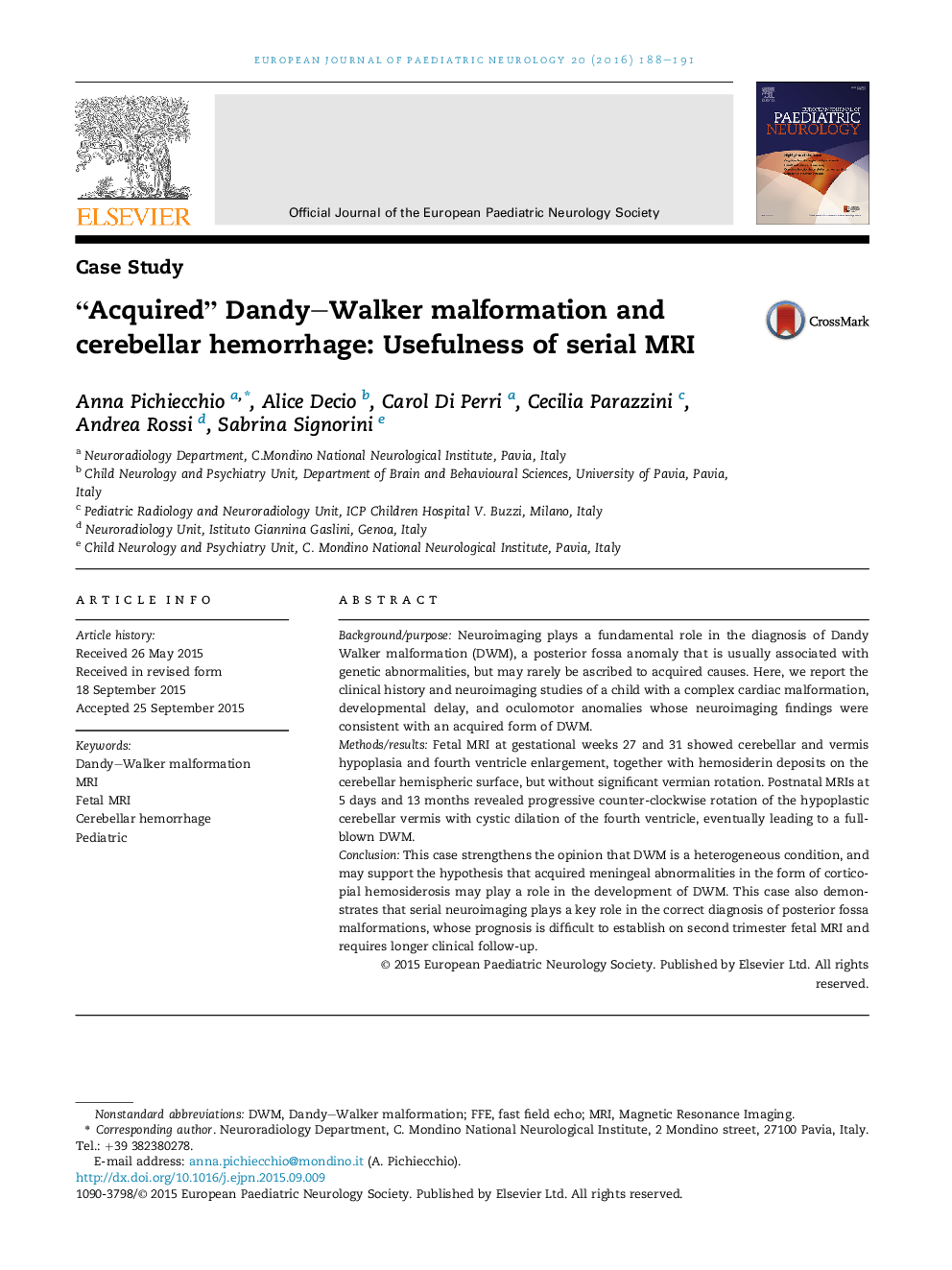| Article ID | Journal | Published Year | Pages | File Type |
|---|---|---|---|---|
| 3053677 | European Journal of Paediatric Neurology | 2016 | 4 Pages |
•We report a case of progressive rotation of the cerebellar vermis which resulted into a Dandy Walker Malformation (DWM).•In utero cerebellar hemorrhage is a possible cause of DWM.•We advise special MR sequences, like GE or SWI, to detect blood products to explain DWM etiology.
Background/purposeNeuroimaging plays a fundamental role in the diagnosis of Dandy Walker malformation (DWM), a posterior fossa anomaly that is usually associated with genetic abnormalities, but may rarely be ascribed to acquired causes. Here, we report the clinical history and neuroimaging studies of a child with a complex cardiac malformation, developmental delay, and oculomotor anomalies whose neuroimaging findings were consistent with an acquired form of DWM.Methods/resultsFetal MRI at gestational weeks 27 and 31 showed cerebellar and vermis hypoplasia and fourth ventricle enlargement, together with hemosiderin deposits on the cerebellar hemispheric surface, but without significant vermian rotation. Postnatal MRIs at 5 days and 13 months revealed progressive counter-clockwise rotation of the hypoplastic cerebellar vermis with cystic dilation of the fourth ventricle, eventually leading to a full-blown DWM.ConclusionThis case strengthens the opinion that DWM is a heterogeneous condition, and may support the hypothesis that acquired meningeal abnormalities in the form of cortico-pial hemosiderosis may play a role in the development of DWM. This case also demonstrates that serial neuroimaging plays a key role in the correct diagnosis of posterior fossa malformations, whose prognosis is difficult to establish on second trimester fetal MRI and requires longer clinical follow-up.
